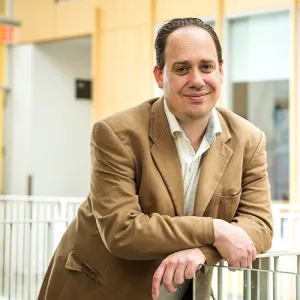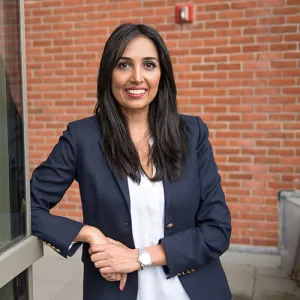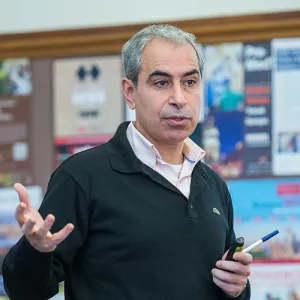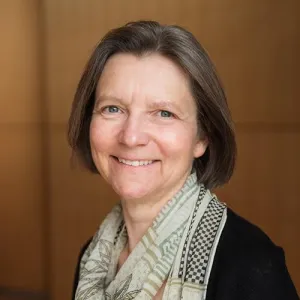
Medieval Studies
Medieval Europe’s diverse regional cultures were balanced by a conscious attempt to create a unified view of the world that embraced religious and social ideals, Latin and vernacular literature, and music and the visual arts. Subjects that are now typically separated into different academic disciplines were rarely separated in the Middle Ages; medieval studies brings these subjects together in a natural, multidisciplinary way. Medieval studies students recreate an understanding of both the unity and diversity of Europe’s fascinating civilization in the Middle Ages.
Requirements & Courses
Goals for Majors in Medieval Studies
- Acquire an understanding of the unity and of the diversity of European civilization in the Middle Ages as expressed in art, history, literature, music and religion.
- Demonstrate ability to conduct academic work across and forge intellectual connections between the approaches and subject matters in the different disciplines that make up the program.
- Achieve linguistic proficiency in a medieval language.
- Demonstrate the ability to conduct research and to express ideas clearly and cogently in both written and spoken language.
Medieval Studies Major
Requirements
- Latin requirement: One 200-level (or above) Latin language course (4 credits) or LAT 100Y (8 credits)
- Two courses in medieval history, normally HST 124, HST 125 or HST 126
- One course in medieval religion or philosophy
- One course in medieval art
- Two courses in medieval language or literature (not necessarily taken in the same department); one course in classical Latin literature may be taken in fulfillment of this requirement
- Two additional courses from the program's list of approved courses
- Focus requirement: two additional courses, at least one at the advanced level, in one of the four areas listed above: history; religion or philosophy; art; language or literature
Major Requirement Details
- The S/U grading option is not allowed for courses counting toward the major.
- Majors are urged to continue Latin at the 200 level.
- A biblical or Koranic language (Greek, Hebrew, Arabic) can substitute for the Latin requirement with permission of the adviser. The student must pursue the classical or scriptural form of the language, not modern Greek, Hebrew or Arabic.
- Courses that devote at least eight weeks of the semester to medieval material may be taken for credit in the major, upon petition to the Medieval Studies Council, provided that the student’s principal written work deals with a medieval subject.
- Students are encouraged to consult the current Five College catalog of courses for offerings at the other four institutions.
- Medieval studies majors are encouraged to propose a Special Studies project or an honors thesis.
Honors
Please consult the director of medieval studies or the program website for specific requirements or application procedures.
The Minor
Requirements
- Language requirement: A demonstrated working knowledge of either
- Latin: One 200-level (or above) Latin language course (4 credits) or LAT 100Y
(8 credits), or - At least one course in a medieval vernacular language
- Latin: One 200-level (or above) Latin language course (4 credits) or LAT 100Y
- Four 200-level courses from the list of approved medieval studies courses at the 200 level or above, including
- At least one course in history
- At least one course in art or music
Students are encouraged to select courses that deal with different aspects of the same time period and comprise together a meaningful examination of a segment of medieval civilization.
Courses
MED 404 Special Studies (4 Credits)
Instructor permission required.
Fall, Spring
MED 430D Honors Project (4 Credits)
Department permission required.
Fall, Spring
MED 431 Honors Thesis (8 Credits)
Please consult the director of medieval studies or the program website for specific requirements or application procedures. Cannot be taken S/U. Department permission required.
Fall, Spring
Crosslisted Courses
ENG 200 The English Literary Tradition I (4 Credits)
A selection of the most engaging and influential works of literature written in England before 1800. Some of the earliest survived only by a thread in a single manuscript, many were politically or religiously embattled in their own day, and some were the first of their kind in English. Fights with monsters, dilemmas of chivalry, a storytelling pilgrimage, a Faustian pact with the devil, a taste of the forbidden fruit, epic combat over a lock of hair: these writings remain embedded in American culture and deeply woven into the texture of the English language. Enrollment limited to 20. WI Literature
Fall, Spring
ENG 202/ WLT 202 Western Classics in Translation I: Homer to Dante (4 Credits)
Offered as ENG 202 and WLT 202. Considers works of literature, mostly from the ancient world, that have had a significant influence over time. May include: epics by Homer and Virgil; tragedies by Aeschylus, Sophocles and Euripides; Plato’s Symposium; Dante’s Divine Comedy. Enrollment limited to 20. WI Literature
Fall
ENG 210 Old English (4 Credits)
A study of the language of Anglo-Saxon England (ca. 450-1066) and a reading of Old English poems, including The Wanderer and The Dream of the Rood. Students learn the 31-character Anglo-Frisian futhorc and read runic inscriptions on the Franks Casket and Ruthwell Cross. Foreign Language; Literature
Fall, Spring, Variable
ENG 211 Beowulf (4 Credits)
A reading of Anglo-Saxon England’s most powerful and significant poem, invoking the world of barbarian Europe after the fall of Rome. Foreign Language; Literature
Fall, Spring, Variable
ENG 213 Playing Knights: Chivalry, Romance, Fantasy (4 Credits)
The knight in shining armor has long outlived the medieval chansons de geste in which s/he was born, riding forward into the modern Western, the fantasy novel, even the space opera. This course explores the premodern English chivalric romance alongside its afterlives, asking what has made this imaginary world—with its quests, duels, magicians, hippogriffs, crossdressing, lady knights—perennially entrancing for so many readers. The course considers the genre's standard features, development and influences; the course also explores the many subversions of this tradition and transgressions of its rules. Why was chivalric romance once considered dangerous reading material? What is heroism good for, and what is it less good at? What expectations and norms do these tales perpetuate, and what fantasies do they allow readers to realize? Discussions include: gender, sexuality, class and empire; Arthuriana; chivalry in art and film; cosplay; and YA fiction. Enrollment limited to 30. (E) Literature
Spring
ENG 250 Chaucer's Canterbury Tales (4 Credits)
A study of England's first cosmopolitan poet whose Canterbury Tales offer a chorus of medieval literary voices, while creating a new kind of poetry anticipating modern attitudes and anxieties through colorful, complex characters like the Wife of Bath. The class reads these tales closely in Chaucer's Middle English, an expressive idiom, ranging from the funny, sly and ribald to the thoughtful and profound. John Dryden called Chaucer the "father of English poesy," but if so, he was a good one. Later poets laughed with him, wept with him and then did their own thing, just as he would have wanted. Restrictions: Not open to first-years. Literature
Fall, Spring, Annually
ENG 271/ GER 271 Imagining Evil (4 Credits)
Offered as GER 271 and ENG 271. This course explores how artists and thinkers over the centuries have grappled with the presence of evil--how to account for its perpetual recurrence, its ominous power, its mysterious allure. Standing at the junction of literature, philosophy, and religion, the notion of evil reveals much about the development of the autonomous individual, the intersection of morality, freedom and identity, and the confrontation of literary and historical evil. Readings include literary works from Milton, Goethe, Blake, Kleist, E.T.A. Hoffmann, Tolkien, Le Guin; theoretical texts from Augustine, Luther, Nietzsche, Freud, Arendt. Conducted in English. Literature
Fall, Spring, Variable
ENG 333jt Seminar: Topics: A Major Writer in English-Tolkien (4 Credits)
J. R. R. Tolkien was an Oxford don and professor of Old and Middle English literature who used fantasy fiction as a technique of moral philosophy and historical analysis, a way of pondering the meaning of human life on earth and the trajectory of human experience through time. This course explores Tolkien’s Middle-earth in The Hobbit (1936), The Lord of the Rings (1965) and The Silmarillion (2001) with special attention to the medieval and early modern sources of Tolkien’s literary imagination as intimated in his essays "Beowulf: The Monsters and the Critics" (1936) and “On Fairy-Stories” (1947). Restrictions: Juniors and Seniors only. Enrollment limited to 12. Instructor permission required. Literature
Fall, Spring, Variable
FRN 253 The Lady, the Knight, the King (4 Credits)
An introduction to the main cultural and literary currents that shaped Medieval France, a period whose values and concept of "literature" were dramatically different from the present. This class focuses on the rise of courtliness and the invention of romantic love, the legend of King Arthur and the transmission of Celtic themes, adultery and madness, magic and the chivalric quest, and the ribald humour of the fabliaux. Readings include The Romance of the Rose by Guillaume de Lorris, Tristan and Yseut, Marie de France’s Lanval, Chrétien de Troyes’ Yvain, troubadour and trouvère lyric and selected fabliaux. Prerequisite: FRN 230. Course taught in French. Foreign Language; Literature
Fall, Spring, Alternate Years
FRN 320 Women Defamed, Women Defended (4 Credits)
The voices of medieval women juxtaposed with the voices of men seeking to defame them (the antifeminist tradition.) How did women writers of the Middle Ages engage with the conventions and rhetoric of misogyny? To what extent did they question the traditional gender roles of their society? How did they represent female characters in their works, and what do their statements about authorship reveal about their understanding of themselves as champions of women? Readings include the love letters of Héloïse, the lais and fables of Marie de France, the songs of the trobairitz and women trouvères, and the writings of Christine de Pizan, alongside excerpts from the major antifeminist tracts of the Middle Ages. . Foreign Language; Literature
Fall, Spring, Variable
FYS 123 Horse-Lords of the Ancient Steppes: The Indo-European Diaspora (4 Credits)
Around 3,000 BCE, pastoral peoples living in southern Russia domesticated wild horses and invented wheeled vehicles, innovations that allowed them to move vast distances--from China in the east to Ireland in the west. They also developed cultural institutions that enabled them to introduce their language to other communities, a lost tongue that has been partially reconstructed from its surviving daughter languages, including those of India and Iran, Europe, and America. This course explores what is known or surmised about this ancient people and reasons for their remarkable success using several kinds of evidence--linguistic, literary, archaeological, ecological, and genomic. Restrictions: First years only; students are limited to one first year seminar. Enrollment limited to 16. WI Historical Studies; Literature
Fall, Spring, Variable
FYS 142 Reacting to the Past (5 Credits)
In this course, students learn by taking on roles, in elaborate games set in the past; they learn skills--speaking, writing, critical thinking, problem solving, leadership, and teamwork--in order to prevail in complicated situations. Reacting roles do not have a fixed script and outcome. While students adhere to the intellectual beliefs of the historical figures they have been assigned, they must devise their own means of expressing those ideas in papers, speeches or public presentations. Class sessions are run entirely by students; instructors guide students and grade their oral and written work. It draws students into the past, promotes engagement with big ideas and improves intellectual and academic skills. Restrictions: First-years only; students are limited to one first-year seminar. Enrollment limited to 24. WI Historical Studies
Fall, Spring, Variable
FYS 167 Viking Diaspora (4 Credits)
The Norse colonies of Iceland and Greenland and the attempted settlement of Vinland in North America were the first European societies of the New World, revealing patterns of cultural conflict and adaptation that anticipated British colonization of the mid-Atlantic seaboard seven centuries later. This course compares the strengths and weaknesses of the medieval Icelandic Commonwealth, founded in 930, with the 1787 Constitution of the United States, both political systems facing serious crises within two generations. Sources for these experimental communities are the oral memories of founding families preserved in the later Íslendingasögur (Sagas of Icelanders) of the 13th century. This course counts toward the world literatures, English and medieval studies majors. Restrictions: First years only; students are limited to one first-year seminar. Enrollment limited to 16. WI
Fall, Spring, Variable
FYS 168 Damaged Gods: Myth and Religion of the Vikings (4 Credits)
A reading of poems and sagas about the Old Norse gods and their cults during the Viking Age (ca. 800-1100 CE) as these were preserved mainly in Icelandic manuscripts of the 13th century, but also in Arabic, Latin, Old High German and Anglo-Saxon texts and runic inscriptions. This course explores the dark world-view and desperate religion of the Vikings from the creation of the world to the end of time, including relations between living and dead, male and female, animals and humans, gods and giants, Æsir and Vanir--a crowded universe of trolls, elves, witches, dwarfs, valkyries, berserks, shapeshifters and various kinds of human being. Restrictions: First-years only; students are limited to one first-year seminar. Enrollment limited to 16. WI
Fall, Spring, Variable
HST 124 History of the Early Middle Ages (4 Credits)
This survey course examines Europe, the Mediterranean and the Middle East in the early medieval era, starting with the dissolution of the Roman Empire. Students study the turbulent nature of political and societal boundaries and the rise of Christianity in Europe before 900 AD, as well as the emergence of Islam as a religion and political power and its influence on the medieval European and Byzantine worlds. Students engage in the examination and discussion of early medieval notions of kinship, race, law and justice, popular piety, and political power. Enrollment limited to 40. Historical Studies
Fall, Spring, Alternate Years
HST 125 Making of the Medieval World, 1000–1350 (4 Credits)
This survey course examines Europe, the Mediterranean world, from the late 10th century to the 14th, considered the height of the medieval world. Students study the interactions between peoples and societies in the medieval world - from the emergence of new conceptions of sovereignty, popular religion and the Crusades, the university, and Arthurian literature, to the restructuring of society in the calamitous century of the Mortalitas Magnas. Students engage in discussions about the notions of conquest and reconquest, race, law and justice, medieval love and chivalry, and the intersection of political and religious authority. Enrollment limited to 40. Historical Studies
Fall, Spring, Alternate Years
HST 126 Renaissance and Reformation? Europe in the Late Middle Ages: Society, Culture and Politics From (4 Credits)
Did radical societal shifts really take place in Europe between 1300 and 1600, as the terms “Renaissance” and “Reformation” imply? Students will use this question to frame their learning in this survey course, studying the period that saw the aftermath of the Black Death, the fragmentation of Christianity, the growing power of monarchs, the advent of the printing press, and the beginnings of the age of European Imperialism. Students will examine and discuss humanism, witch hunts, popular piety and heresy, the advent of the Italian city-state, and the intersection of politics and science. Enrollment limited to 40. Historical Studies
Fall, Spring, Alternate Years
HST 227mm Colloquium: Topics in Medieval European History-Magic in the Middle Ages (4 Credits)
The course uses magic as a case study for exploring cultural transmission in the Middle Ages. The course examines Germanic and Greco-Roman occult traditions, and the way in which the medieval synthesis of these cultures effects understandings of the occult. The course follows the influence of the Arabic and Hebrew influences on western occultism of the High Middle Ages, and flowering of the Renaissance magical tradition. The course challenges and reshapes some of our basic understandings about Medieval society. It problematizes modern division between science, magic and religion to illustrate how occult beliefs were part of wider religious experiences. Enrollment limited to 18. Historical Studies
Fall, Spring, Variable
HST 228/ JUD 228 The Jew in the Medieval World (4 Credits)
Offered as JUD 228 and HST 228. How does the medieval period influence or complicate contemporary understandings of race, religious cooperation and rivalry, and constructions of otherness? Explores intellectual and cultural cross-pollination in the Islamic Middle East and North Africa, the Iberian Peninsula, and Europe, including crises reflected in disputations, crusades, exile and murder. Open to students at all levels. Historical Studies; Literature
Fall, Spring, Variable
HST 229 Colloquium: A World Before Race?: Ethnicity, Culture and Difference in the Middle Ages (4 Credits)
Twenty-first century scholars argue that race is a constructed social identity that began to coalesce around the seventeenth century. But were they right? In this course, we will look to the Middle Ages to challenge the consensus that racial constructions were a byproduct of modernity. Does race function differently between the world of Latin Christendom and that of the dar al-Islam? What are the advantages and dangers of using the prism of race to analyze ethnic, cultural and religious differences in this medieval period? What does studying race in the Middle Ages teach us about contemporary conceptions of race? Enrollment limited to 18. Historical Studies
Fall, Spring, Alternate Years
HST 291 Reacting to the Middle Ages (4 Credits)
This course uses an active learning pedagogy of role-playing games to teach about the society, culture, and politics of the medieval world. Students are assigned character roles with specific goals and must communicate, collaborate, and compete effectively to advance their objectives. Class sessions are run by students, students adhere to the philosophical and intellectual beliefs of these roles they must devise their own means of expressing those ideas persuasively in papers, speeches, or other public presentations to try to win the game. No previous experience with Reacting to the Past or knowledge of the medieval world is required. Enrollment limited to 30. Historical Studies
Spring, Variable
ITL 332 Finding Dante: The Inferno (4 Credits)
This course focuses on Inferno, the first canticle of the Divine Comedy by Dante Alighieri (1265- 1321), the culture that originated it, and connections with today’s world. In particular, the course pays attention to Dante’s ties to classical and medieval Christian culture, his political views, his ideas on language, his involvement in contemporary intellectual debates, his efforts to use poetry for ethical and religious ends, and his literary experimentation. During the harrowing descent into the deepest spires of Hell, students understand Dante in light of medieval culture and medieval culture in light of Dante. As such, students experience Dante’s Inferno in its original beauty and make his fears, concerns, and desires theirs. Taught in Italian. Foreign Language; Literature
Fall, Spring, Variable
ITL 334 Boccaccio: Decameron (4 Credits)
This course goes deep into the world of Boccaccio’s Decameron, a collection of colorful tales that paint a vivid and often scandalous picture of medieval life. The class examines a rousing cast of characters: sly wives, shrewd merchants, sensual nuns, roguish painters, rebellious daughters and so on, all negotiating the rapidly evolving social and sexual mores of their time. Boccaccio’s storytellers, in weaving their tales, also construct the foundation of a new and more just community. In this course, students explore this masterpiece of Italian literature with an eye to what they can learn from this text in the present moment. Taught in Italian. Foreign Language; Literature
Fall, Spring, Variable
LAT 100Y Elementary Latin (5 Credits)
The Latin language has had an extraordinarily long life, from ancient Rome through the Middle Ages to nineteenth-century Europe, where it remained the language of scholarship and science. Even today it survives in the Romance languages that grew out of it and in the countless English words derived from Latin roots. This course prepares students to read Latin texts in any period or area of interest through a study of the fundamentals of classical Latin grammar and through practice in reading from a range of Latin authors. Some attention is also given to Roman culture and Latin literary history. This is a full-year course and cannot be divided at midyear with credit for the first semester. Enrollment limited to 30.
Fall, Spring, Annually
LAT 212 Introduction to Latin Prose and Poetry (4 Credits)
Practice and improvement of reading skills through the study of a selection of texts in prose and verse. Systematic review of fundamentals of grammar. Prerequisite: LAT 100Y or equivalent. Foreign Language; Literature
Fall
REL 110hl Colloquium: Topics in Thematic Studies in Religion- Jerusalem and Invention of the Holy Land (4 Credits)
This course examines the religious and historical legacy of the city of Jerusalem and the idea of "the Holy Land" in Judaism, Christianity and Islam. It explores the ways Jerusalem and the Holy Land have been sanctified in scripture, art, architecture, literature, poetry and film. It also explores how rulers have co-opted this sanctity to promote their own legitimacy and political agendas. The course considers Jerusalem and the Holy Land as a shared heritage the inspired co-existence and rivalry, as well as bloody conflicts, both in the past (e.g., the Crusades) and today (e.g., Israeli-Palestinian conflict.) Enrollment limited to 20. Historical Studies
Fall, Variable
REL 145 Introduction to the Islamic Traditions (4 Credits)
The Islamic religious tradition from its beginnings in seventh century Arabia through the present day, with particular emphasis on the formative period (A.D. 600–1000) and on modern efforts at reinterpretation. Topics include Muhammad and the Qur’an, prophetic tradition, sacred Law, ritual, sectarianism, mysticism, dogmatic theology and popular practices. Emphasis on the ways Muslims in different times and places have constructed and reconstructed the tradition for themselves. The course concludes with examples of modern Islamic thought (modernism, feminism and militancy). Historical Studies
Fall, Variable
REL 238 Mary: Images and Cults (4 Credits)
Whether revered as the Mother of God or remembered as a single Jewish mother of an activist, Mary has both inspired and challenged generations of Christian women and men worldwide. This course focuses on key developments in the "history of Mary" since early Christian times to the present. How has her image shaped global Christianities? What does her perceived image in any given age tell us about personal and collective identities? Topics include Mary’s "life"; rise of the Marian cult; Marian apparitions (e.g., Guadalupe and Lourdes) and miracle-working images, especially in Byzantium and Russia; liberation and feminism; politics, activism, mysticism and prayer. Devotional, polemical and literary texts, art and film. Enrollment limited to 35. Historical Studies
Fall, Spring, Alternate Years
REL 247 The Qur’an (4 Credits)
The Qur’an, according to the majority of Muslims, is God’s word revealed to Muhammad through the angel Gabriel over a period of 22 years (610-632 C.E.). This course introduces students to Islam’s scriptural text: its content, form, structure and history. It also situates the Qur’an in the larger frame of the genre of Scripture: What does it mean for a text to be revealed? Study of the Qur’an as a seventh-century product, as well as the history of reception of this text. Analysis of its varying impact on the formulation of Islamic salvation history, law and legal theory, theology, ritual, intellectual trends, and art and popular culture. Historical Studies; Literature
Fall, Spring, Variable
REL 248jh Topics in Modern Islam-Jihad (4 Credits)
The persistence of the ideology of jihad in modern Islam drives revivalists and apologists to disagree over the meaning of “jihad” and whether it should be understood to necessitate violence or as an interpersonal spiritual struggle. This course examines the most important modern debates about Jihad and how each position engages and appeals to the foundational Islamic sources (e.g. Qur’an, Muhammad, Sharia/Islamic Law) and Islamic history for legitimacy. It also explores the factors that make the rhetoric used by modern jihadists popular among certain Muslim constituencies, inspiring them to wage holy war against “infidels” as well as fellow Muslims. Course may be repeated for credit with a different topic. Enrollment limited to 35. Historical Studies
Fall, Spring, Variable
REL 305mc Seminar: Advanced Topics in Religion-The Muslim World and the Crusades: Then and Now (4 Credits)
This course explores the historical, religious, political, social and cultural impacts of the Crusades on the Muslim World from the late eleventh century until today. Special attention is given to the variety of Muslim reactions to and encounters with the Franks, including hostile and friendly relations. The course also considers the effect of the Crusades on the course of Islamic history and religious thought and its enduring legacy by examining texts, films, novels, poetry, etc. The broader objective is to understand how and why specific historical narratives generate powerful religious discourses that shape the current political, social and cultural realities. Restrictions: Juniors and seniors only. Enrollment limited to 12. Instructor permission required. Social Science; Historical Studies
Fall, Spring, Variable
REL 345sl Seminar: Topics in Islamic Thought-Muslims and Shari'a law (4 Credits)
This seminar explores the complexity and history of Shariʿa Law in Islam. It examines the formation of a variety of schools of Shariʿa from very early Islamic history until today and the way Muslim jurists have maintained the relevance of Shariʿa to their respective societies and times. It covers the theory and application, purpose, sources (e.g., Qurʾan, Muhammad, customs), hermeneutical tools (e.g., reason, public good, doubt) and the Shariʿa laws themselves. The course also discusses the interaction of Shariʿa with other legal systems, especially in the context of today where Shariʿa is restricted to a small realm (primarily family and personal law). Restrictions: Juniors and seniors only. Enrollment limited to 12. Instructor permission required. Historical Studies
Fall, Spring, Variable
SPN 241 Culturas de España (4 Credits)
A study of the Spain of today through a look at its past in art, history, film and popular culture. The course analyzes Spain’s plurality of cultures, from the past relations among Jews, Christians and Muslims, to its present ethnic and linguistic diversity. Highly recommended for students considering Study Abroad in Spain. Fulfills the writing requirement for the major. Prerequisite: SPN 220 or equivalent. Enrollment limited to 20. Foreign Language
Spring, Variable
SPN 245wc Topics in Latin American and Peninsular Studies-Women in Iberian Cinema (4 Credits)
Focusing on the experiences and representations of women and girls of color in urban areas in Spain and Portugal, this transdisciplinary course explores topics such as gender, racism, sexual minorities, social movements and political activism in Iberian societies. Students also examine how digital technology and social media have influenced Portuguese and Spanish minorities' public participation. Prerequisite: 200-level SPN course or by placement. Restrictions: SPN 245 may be repeated once with a different topic. Enrollment limited to 20. Arts; Foreign Language; Historical Studies
Fall, Annually
SPN 247 Race and Racism in Premodern Iberia (4 Credits)
This course challenges the dominant presentism by exploring understandings of race and racism in the context of premodern Iberia (present-day Spain and Portugal). Themes include intellectual and physical encounters between medieval kingdoms from West Africa and Europe, the construction of sameness and otherness in Iberia, and the intersection of race, class, and indigeneity in the Middle Ages. Enrollment limited to 20. Foreign Language; Historical Studies; Literature
Fall, Spring, Annually
SPN 250sm Topics in Iberian Cultural History-Sex and the Medieval City (4 Credits)
This course examines the medieval understanding of sex and the woman’s body within an urban context. The class reads medieval texts on love, medicine and women’s sexuality by Iberian and North African scholars. This course investigates the ways in which medieval Iberian medical traditions have viewed women’s bodies and defined their health and illness. The course also addresses women’s role as practitioners of medicine, and how such a role was affected by the gradual emergence of “modern” medical institutions such as the hospital and the medical profession. Prerequisite: SPN 220 or equivalent. Enrollment limited to 19. Foreign Language; Historical Studies; Literature
Fall, Spring, Variable
WLT 177ew Colloquium: Topics in World Literatures-Epic Worlds (4 Credits)
A comparison of the first literary works to emerge from oral story-telling traditions among several ancient, medieval, and modern peoples to express their highest ideals and sense of collective identity: the Mesopotamian "Gilgamesh," the Indian "Mahabharata," the Old Irish "Táin Bó Cúailnge," the Medieval Welsh "Four Branches of the Mabinogi," the Finnish "Kalevala" and the Nyanja (Congolese) "Mwindo." The course explores these epics as sites of cultural formation and moral contest, and especially seeks to understand their world-views, value systems, and trajectory of human history through time as these are revealed in the life-struggles of vividly imagined heroes and heroines. Restrictions: WLT 177 may be repeated once with a different topic. Enrollment limited to 20. WI Literature
Spring, Variable
WLT 214 Moonlit Lovers and Bloodstained Kings: Premodern Indian Literature (4 Credits)
Lovers meet in a moonlit grove, away from prying eyes. Kings dripping with blood loom over battlefields strewn with fallen enemies. Narratives full of intrigue and pathos abound in the premodern literatures of India and in this class students become sahṛdayas (“those with heart”)— sensitive readers and connoisseurs of these compelling tales. The course uses Indian literary and poetic theory to build a critical toolbox to analyze readings. Primary sources range from the fifth century BCE until the sixteenth century CE in a variety of India’s languages including Sanskrit, Tamil, Telugu, Kannada, and Rajasthani. Though the focus is on premodern materials, the course explores these texts’ enduring legacies in contemporary art, culture, and politics. (E) Literature
Fall, Spring, Alternate Years
Faculty
Opportunities
Contact Department of Medieval Studies
Dewey House 106
Smith College
Northampton, MA 01063
Phone: 413-585-3679 Email: llettre@smith.edu
Director: Joshua Birk
Administrative Coordinator: Lyndsay Lettre





